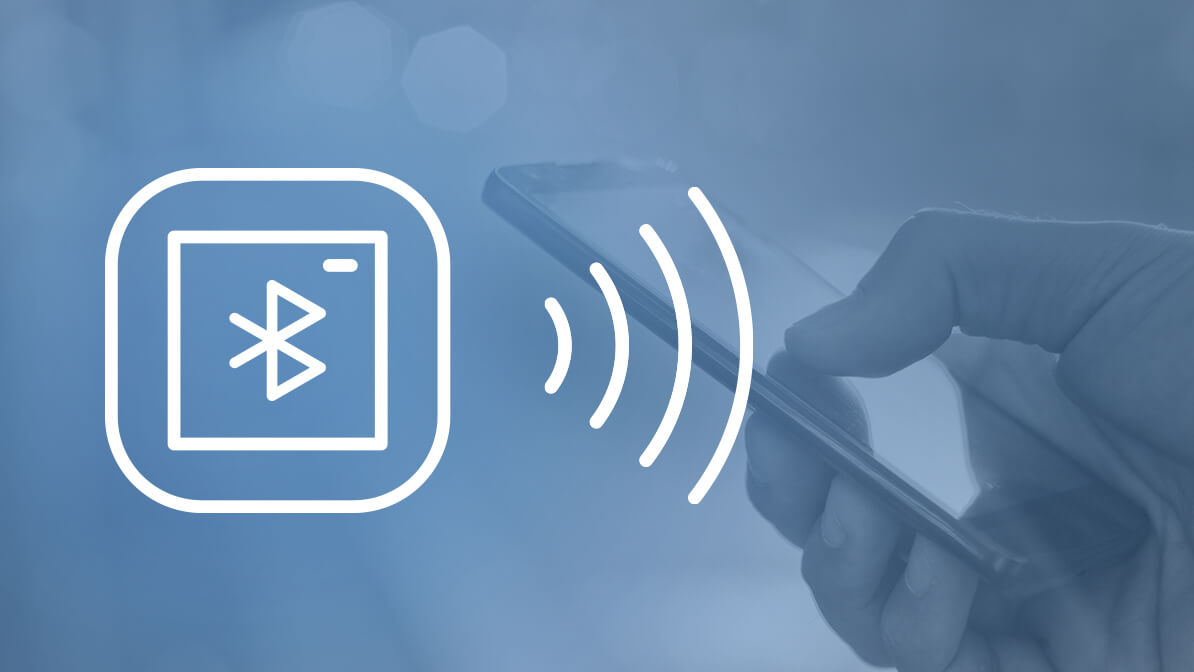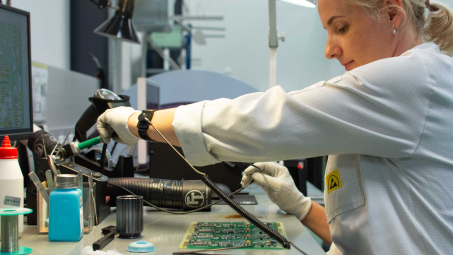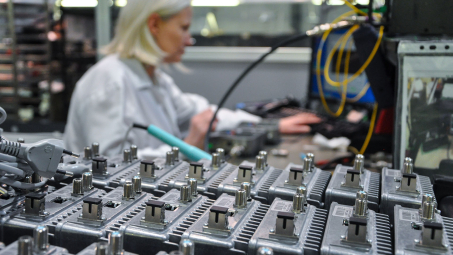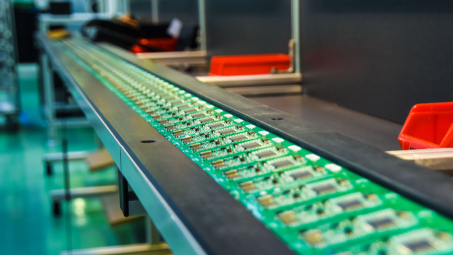It’s all designing good hardware of a beacon to make the most of it
Beacons are one of the examples of how we have transferred the well-known Bluetooth technology from everyday use to the business environment. We could expand their application on a bigger, more usable scale if the location services Bluetooth were more accurate. As it happens, it is already viable (you can track objects down to centimeters), but it needs more sophisticated technology - the technology which takes its beginning in the first steps of designing beacons hardware.
In and of
itself, beacons work according to the simple rules of Bluetooth Low Energy (BLE) and, at their
basis, they do not challenge companies that would like to implement their basic
technology. The situation gets complicated when they want to apply the
possibilities brought by the new generation of Bluetooth — Bluetooth 5.1. It
allows for finding the things with accuracy running down to a few centimeters,
so we can imagine that businesses like warehouses, shopping malls or airports
(where precise wayfinding for the transferring travelers can sometimes be the
only chance to catch the airplane in time) can now benefit from it more.
Old Bluetooth Low Energy beacons we heard, the new ones we see
To get the
most of Bluetooth 5.1, its users have to coordinate the whole system that
basically splits into two parts: the devices that transmit data and those which
receive it. Until not so recently, if one wanted to track anything via
Bluetooth, all was supported only by RSSI (Received Signal Strength Indication).
The device which received the signal knew the strength of it so it could tell
if the transmitter was far away or somewhere nearby — knowing the exact position
was not that obvious, though. The position could be determined by a process
called trilateration, meaning, measuring the signal between three known
reference points (e.g.: two antennas and one smartphone).
The
accuracy of the data obtained through the RSSI method is condemned to the whims
of: the signal path between the transmitter and receiver; the infrastructure
between the receivers and some centralized server; or the architecture of the
building beacons are used in. All in all, these factors limit the accuracy of
the data position of an object in interest from 1 to 10 meters. Bluetooth 5.1,
with its direction-finding capability, goes down to centimeters. That brings
the analogy that beacons with the legacy Bluetooth system might have been heard
— in distance or nearby, left or right; the Bluetooth 5.1 beacons can
be really seen, pointed out — the item in the warehouse is stored on this or
that shelf right by this or that object.
But before
we jump deep into the tech specification of the beacon modules using this innovation,
let us outline the ways companies can avail themselves of beacons in general.
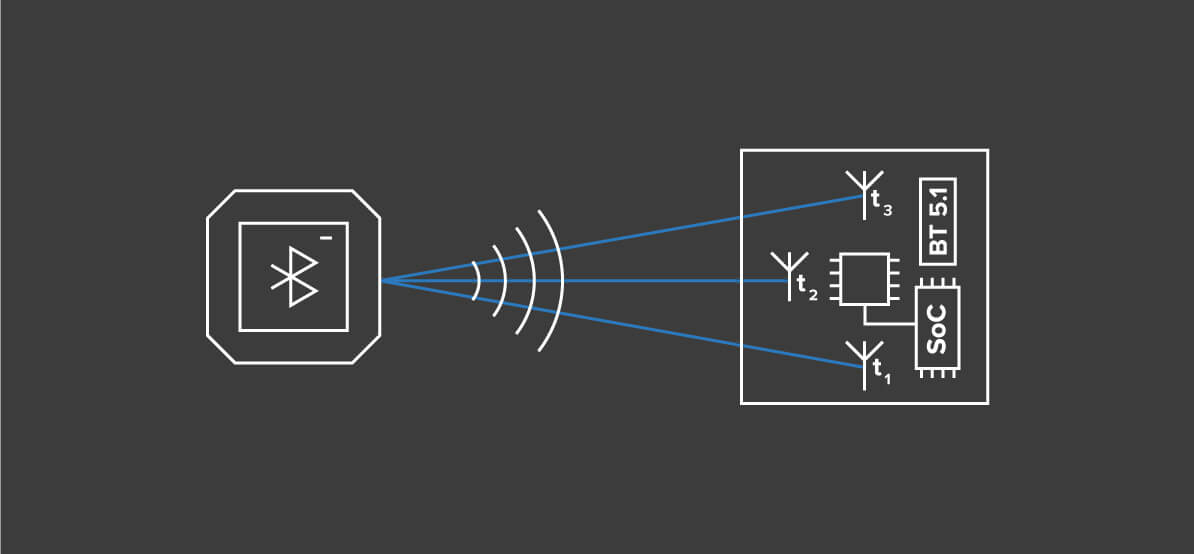
4 ways for a beacon
The use of Bluetooth in beacons breaks down into proximity solutions and positioning systems.
- In the first, we will find beacons which apply the RSSI method, and they will allow us for finding our private properties (Item Finding Solution), which usually cooperates with audio or light signal coming from the item we are searching for: keys, wallet, car, etc.
- The next solution falling into this group is the Point of Interest Solution — it is enough to come up to a beacon with our smartphone in a museum to get the information on the exhibit we happened to be nearby. All is, of course, held together by an app installed in our mobiles. The same mechanism powers the audio sets or pair phones.
- The second way of using Bluetooth (positioning systems) calls for a more complex technology based on the aforementioned trilateration process; like in Real-Time Location System in which the beacons receive a signal on a periodic basis with the frequency depending on the movability of the item followed. They inform, however, only if the object or a person is close or from which side it comes. The proximity is limited to meters.
- The other solution for the positioning system works contrary to the Real-Time Location in terms of direction. Beacons do not receive the signal, but they transmit it, for instance, to a smartphone. Based on the strength of the signal and which beacon is within the reach of the smartphone, the app in the smartphone processes the data to position the user — the mechanism is called Indoor Positioning System. Wayfinding or building plan grids are the best tries for this method. But still, the accuracy leaves quite a lot to yet fulfill.
Bluetooth beacon location tracking
Bluetooth 5.1 with the option of direction-finding changes the deal in this game. The accuracy is close to centimetres and the frequency of data refreshing is faster than it takes place in the old versions - all based on triangulation rules.
The innovation in Bluetooth 5.1 comes with the solution of an antenna array. The signal sent from a beacon crosses the array of antennas each of which sees a different phase in the signal according to the distance from the beacon. The antennas gather the samples of the phases on whose basis they establish the relative direction of the signal coming from the beacon. The more of those antennas, the precision is greater.
Devices applying Bluetooth 5.1 can work in two ways:
1. Angle of Arrival (AoA) – happens when a beacon module with a single antenna sends a Bluetooth signal to a receiver device, so-called locator. The locator itself has multiple antennas arranged in an array and, what’s most significant, measures the signal’s arrival angle to get information about the beacon location. The receiver devices are responsible for data processing. It is, thus, power-consuming for such small devices that have to be designed with the thought of low energy running.
2. Angle of Departure (AoD) – works similar to Angle of Arrival, however, the device roles are different. Here, the locators send the signal using antennas array and the beacon calculates the relative angel to the locator. Once the beacon receives the signal from locators, the position can be easily identified.
The possibility of enhancing location accuracy arises as a promise for the market needs. We could be closer than ever to the customer and follow them with real scrutiny.
The twist in implementing the new generation beacons is their integration and calibration. The paths of the signal coming all the way through the air and wires are weighed down by the risk of bad calculation of phases — that would result in move of the direction angle from its real position.
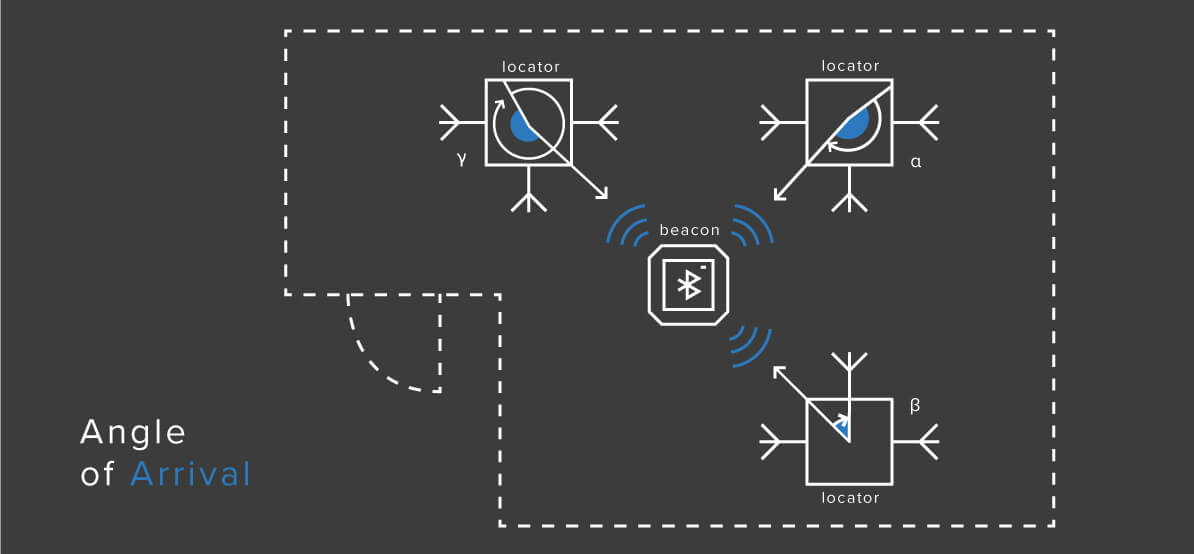
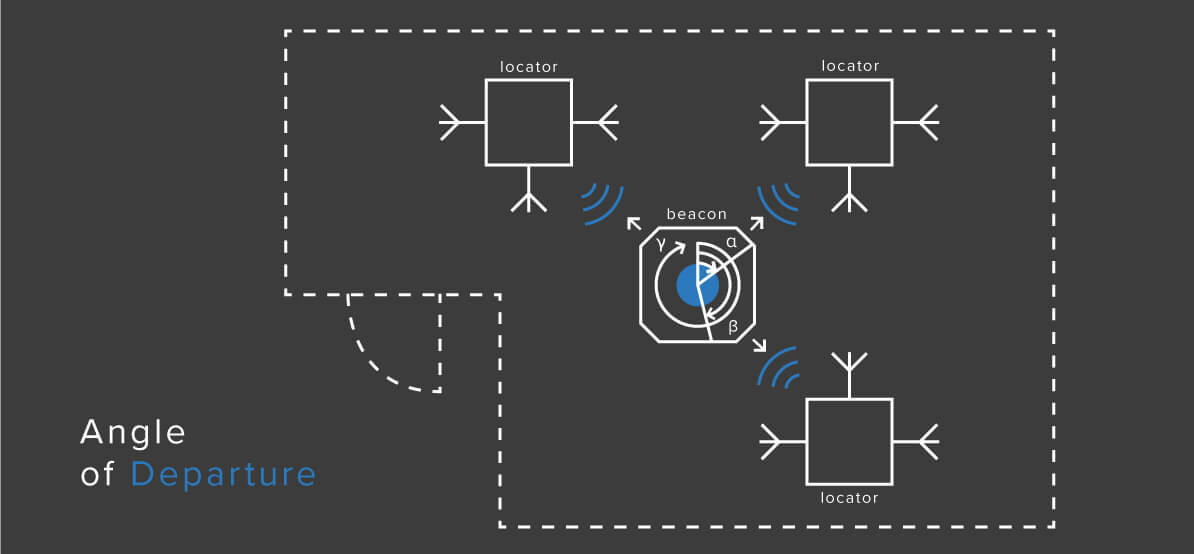
Designing a beacon’s hardware - the logistics of a signal
All begins in the beacon's hardware. When, in a second, you will be presented with an example of how many steps a single signal goes through, it will picture more clearly why the construction itself is so essential for a beacon to work.
Moreover, the job does not finish in the beacon — it goes down the wires and wires, and switches, and right down to a System on Chip or another processing device. It embraces the whole network and its integration. Right by designing a beacon in whole, designers should put in the hardware elements to prepare the device to communicate with the whole infrastructure.
Right after the hardware, there follows a well-configured firmware with the algorithms responsible for riddling out all the phases which may happen within one signal; they appear on the steps, like: from the transmitter to the beacon, from the beacon to the switch, and from the switch to the System on Chip. There can be tens or hundreds of beacons, and all of their paths to the System on Chip differ in length, but, at the same time, these paths have to meet at the end at the same time…
Try to multiply all beacons times all phases — it already brings some dizzy. But that is not the end. Bluetooth Low Energy (used by beacons) operates on 40 different channels, so whatever the number you have made from the number of beacons times the number of phases, now take it all and assume that beacons may receive the signal from 40 different channels. In the end, you need to draw out an average from the whole to get as close to the position of the device you want your beacons to communicate with as possible.
Designing beacons for your customers
Enhanced location accuracy comes as a natural response to what has been happening on the market. Mass customization and following the behavior of our customers call for measures that could allow us for automated communication.
Imagine using the Point of Interest solution not only in a museum where you could direct the smartphone to a specific painting or sculpture in order to get more information but you may apply the same solution in a factory, magazine or shop. By correct directing a device, workers and robots can manage the stock, and customers can easily learn about the fabric composition of a piece of clothing. The method and use of beacons depend purely on market needs. The remaining part is to design it the way your customers need it.
In VECTOR BLUE HUB, we hold knowledge and competence which will answer many design challenges placed by a variety of markets. If you are seeking an experienced design partner, request a free consultation today!




